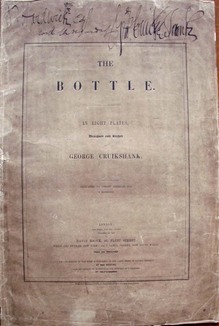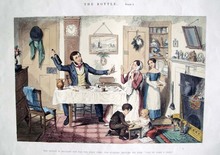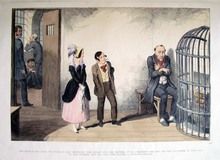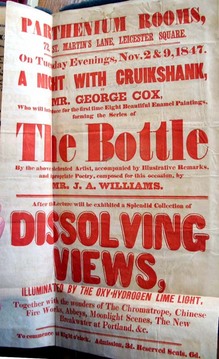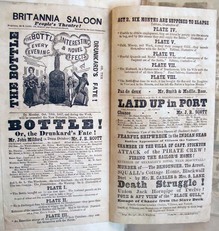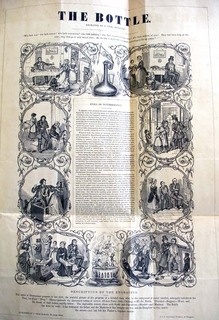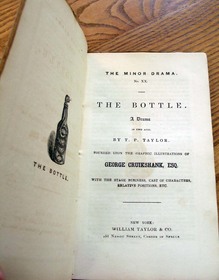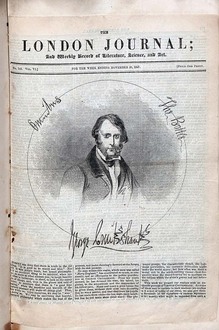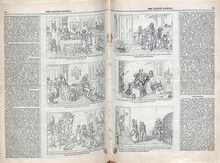In 1847, inspired by William Hogarth’s Rake’s Progress, George Cruikshank published a graphic narrative in eight plates showing one man’s descent into sin, poverty, and insanity, due to alcoholism. More than 100,000 copies of The Bottle were sold in the first few days. The book was exported to America and Australia, dramatized at eight London theaters simultaneously, and performed as a magic lantern show.
George’s father, Isaac Cruikshank (1756-1811), was also a successful caricaturist until he died in a drinking contest. George was himself a heavy drinker until 1847, when he signed a vow of total abstinence. The Bottle was first published while he was still drinking.
The title page for an 1881 edition carries the following message: “Mr. George Cruikshank thinks it right to state that the first edition of this Bottle (the title of which ought to have been THE BLACK BOTTLE) was first published in 1847, double the size of this edition, and sold at One Shilling. And he wishes it to be further understood that these smaller plates are taken from the original Etchings, which he has in his own possession.”
“And Mr. George Cruikshank’s [objective] in producing this work of the Bottle was to assist, if possible, in putting a stop to the poverty, misery, wretchedness, insanity, and crime which are caused by strong drink. And this Bottle was published before G.C. became a Teetotaler; but upon mature reflection he came to the conclusion that nothing would ever stop these dreadful evils but Universal Total Abstinence from all intoxicating liquors; and thus having come to the belief that it was of no use preaching without setting an example, George Cruikshank in the same year, 1847, became a Total Abstainer.”
Cruikshank reproduced his drawings by glyphography, a quicker, cheaper way of making printing plates than carving wood blocks or etching plates with acid. Patented in 1842, the glyphographic plate was made by covering copper with a thick wax resist and drawing through the wax to expose parts of the metal. The plate was then electroplated creating a metal relief line, similar to the etched metal relief plates of William Blake but much less detailed or elegant. The relief plate can then be letterpress printed along with a caption or other text.
Above: Tom Taylor (1817-1880), The Bottle. As first performed at the City of London Theatre, in 1847 (New York: DeWitt Publishing House, [1847?]). Theatre Collection (ThX) TC023 (Playbooks Collection) Box 155. Below:The London Journal and Weekly Record of Literature, Science, and Art, November 20, 1847
